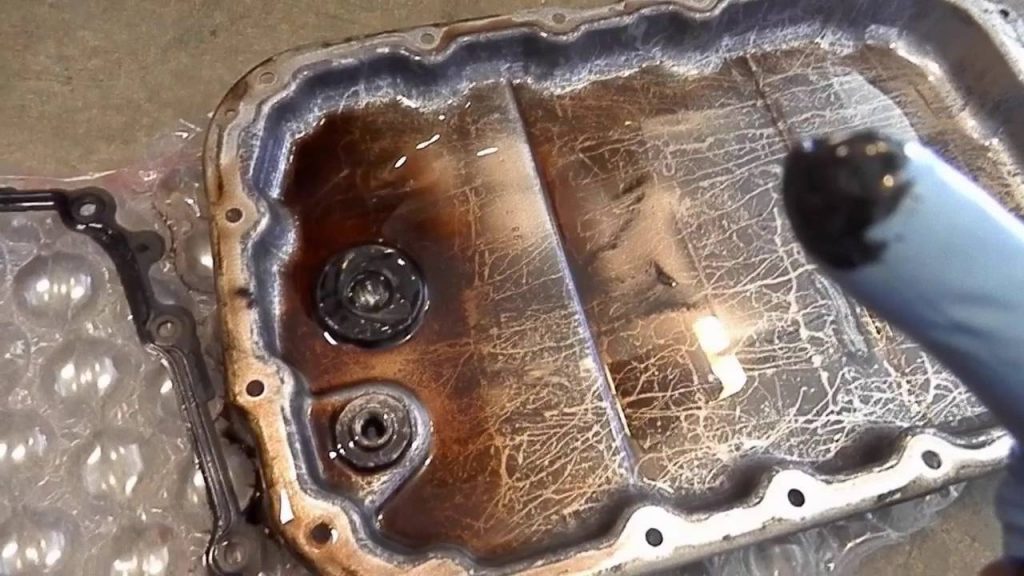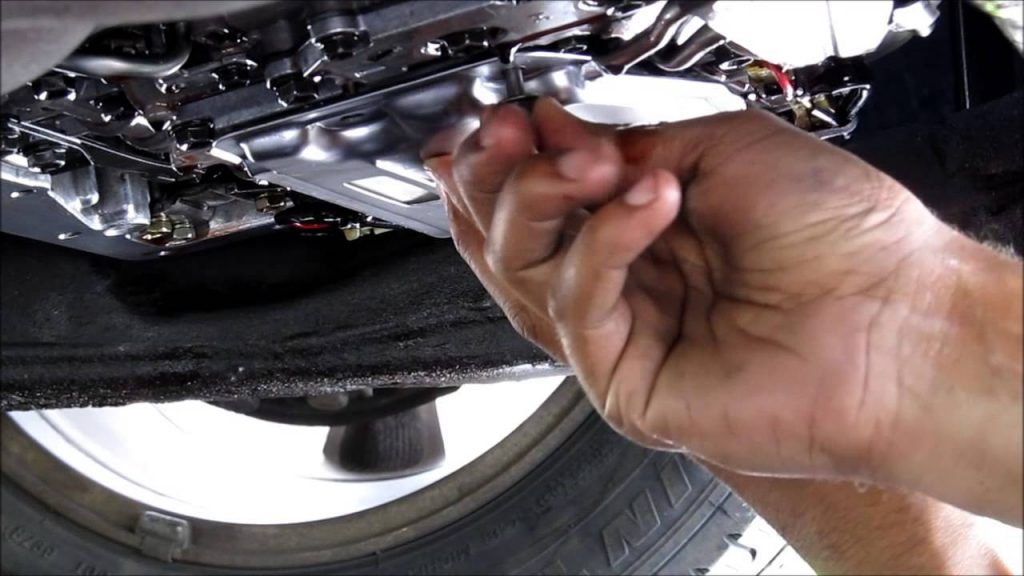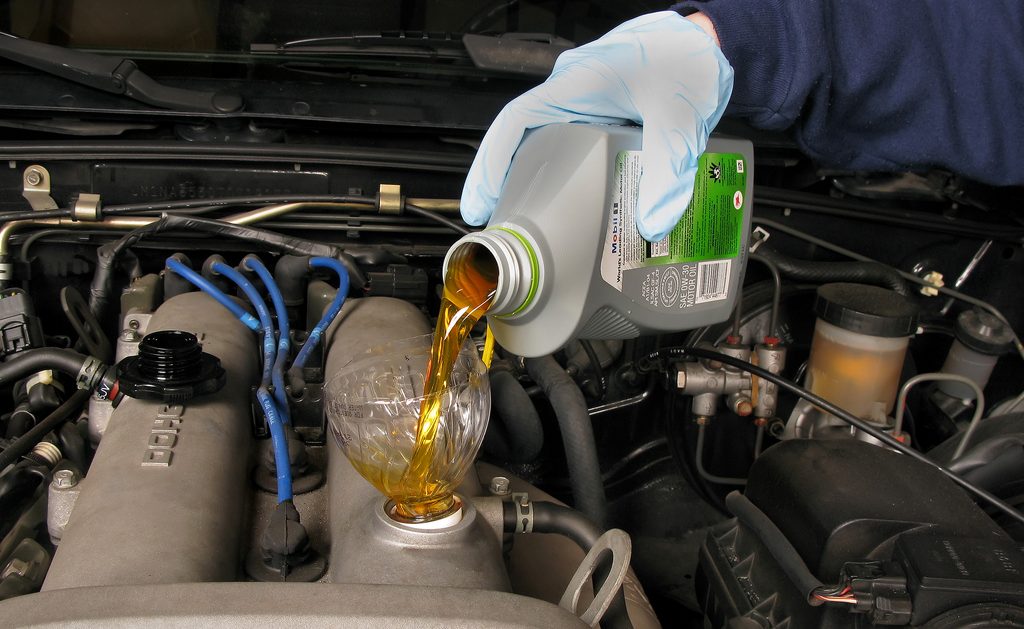All transmissions require servicing to ensure they continue to change gear smoothly. The service includes replacing the transmission fluid and gaskets. Unlike a manual transmission, the automatic alternative requires a specific ATF (Automatic Transmission Fluid).
The best transmission fluid is the Mobil 1 112980 Synthetic ATF, which promotes excellent lubrication, smooth shifting, cooler operating temperatures and long life.
Although some classic cars that uses conventional motor oil as the lubricant, it’s not suitable for any of the modern complex transmissions. Due to the large amount of heat produced and extra gears, specific transmission fluids need to be used.
Table of Contents
Transmission Fluid Comparison
| Transmission Fluid | Synthetic | Specialty |
|---|---|---|
| Mobil 1 112980 | Yes | All Rounder |
| Royal Purple Max ATF | Yes | Performance |
| Castrol TRANSMAX | No | Value for Money |
| Red Line MTL | Yes | Manual |
| Valvoline CVT | Yes | CVT |
| ACDelco 10-9395 | No | Older Vehicles |
| Castrol 03518 | No | High Mileage |
Transmission fluids provide lubrication, cooling, anti-rust and other qualities. Without it, the temperature increases and debris builds up, which will gradually wear down the components within the transmission. Unlike a manual, automatic transmission fluids break down under normal use due to the higher operating temperature and will require changing.
Manual transmissions can use a range of different fluids such as ATF, synthetic oil and more (refer to the owners documentation) and it doesn’t require as much attention.
Below is a list of the best transmission fluids that increase lubrication and promote smoother gear changes whilst shifting.
The Best Transmission Fluid
1. Mobil 1 112980 Automatic Transmission Fluid
Mobil 1 Synthetic ATF is a premium automatic transmission fluid with a high velocity index of 176 and excellent cold temperature flow. Unlike cheaper alternatives, the Mobil 1 formula will not break down as easily and contributes to cooler operation and smoother shifting.
For those that live within a cold climate, the Mobil 1 formula will provide excellent performance at temperatures as low as -54 degrees Celsius.
Other features of the Mobil 1 Synthetic ATF include:
- Multi-vehicle formula
- Official lubricant of NASCAR
- Fully synthetic formulation
- Meets or exceeds all manufacturer specifications
- 1 quart bottle
The brand states that their automatic transmission fluid will work with a range of vehicles from Ford, GM and the majority of domestic vehicles. It’s one of the best transmission fluids that is fully synthetic and promotes cool and smooth operation.
Check it Out2. Castrol 03520C TRANSMAX DEX/MERC ATF
Castrol is another highly reputable automotive oil brand and their automatic transmission fluid is the most popular. It’s known as the Transmax ATF and it exceeds and meets both MERCON and DEXRON-III H requirements for complete peace of mind.
Unlike some of the alternatives, the brand state that you can use this automatic transmission fluid as a replacement for certain power steering fluid applications.
Other features of the Castrol Transmax ATF include:
- Enhanced friction durability and oxidation resistance
- Meets MERCON and DEXRON-III H requirements
- Can be used in some power steering applications
- Sold in 1, 4 or 24 quart bottles
- Suitable for most Ford and GM vehicles
The Castrol Transmax combines performance with excellent value for the money, which makes it a great automatic transmission option. Compared to most of the alternatives produced by reputable brands, it offers the best value per quarts, which is a great bonus.
Check it Out3. Royal Purple Max High Performance Synthetic ATF
The Royal Purple 06320 Max ATF is another synthetic automatic transmission fluid that’s highly rated. It’s been developed for high performance and the brand states that it can drastically reduce heat and wear within the transmission.
In terms of providing this performance, this transmission fluid has a low co-efficient of friction and a high film strength.
Other features of the Royal Purple 06320 Max ATF include:
- Designed for maximum performance
- Full synthetic and can be mixed
- Oxidation stable formula that’s long lasting
- Suitable for the majority of passenger vehicles
- Available as a 1 quart or 24 quart bottle
Unlike other automatic transmission fluids, this formula can be mixed with other ATF’s, which is great for top ups. However, if you were to perform a proper transmission service, you would want to completely flush the system. Overall, it is the best high performance transmission fluid and recommended for the majority of passenger vehicles.
Check it Out4. Red Line MTL Manual Transmission Oil
Manual transmission use a different mechanism to an automatic and require a different type of transmission fluid. One of the best options on the market for manual is this Red Line MTL formula, which is full synthetic and designed for high performance.
In terms of the gear and motor oil viscosity requirements, it meets 70W, 75W, 80W, SAE 30, 5W30, and 10W30.
Other features of the Red Line MTL include:
- Full synthetic formula
- Excellent gear and synchro protection
- Balanced slipperiness for smooth shifting
- Suitable for both low or high mileage transmissions
- Can be mixed with other formulas
- Available in 1 quart bottles
The Red Line MTL is a high quality synthetic formula that is by far the best manual transmission fluid on the market. Although not the cheapest, it’s a high performance lubricant that won’t disappoint.
Check it Out5. Valvoline CVT Transmission Fluid
The CVT transmission isn’t the most desirable option but is found in many popular vehicles such as the Toyota Prius and others. This Valvoline CVT formula is a premium based option that is designed specifically for the CVT transmission.
Valvoline state that you are able to use this CVT transmission fluid for most Nissan, Honda, Toyota and Subaru cars.
Other features of the Valvoline CVT Formula include:
- Full Synthetic formula
- 1 quart bottle
- Enhanced anti-shudder protection
- Promotes a better oil flow at low temperatures
- Uses an advanced additive technology
For maximum protection and performance, the Valvoline formula is best for CVT transmissions. There is a wide range of formulas available but this full synthetic blend offers the best value for the money without compromising its performance.
Check it Out6. ACDelco 10-9395 Dexron VI ATF
The ACDelco transmission fluid is backwards compatible with the previous DEXRON ATF and can be used as a replacement fluid for older transmissions. This is due to the later DEXRON consisting of enhanced friction durability, foam control and oxidation resistance.
This automatic transmission fluid is fully approved and licensed by GM and recommended for all GM models from 2006 and newer.
Other features of the ACDelco 10-9395 Dexron VI include:
- Backward compatibility with previous DEXRON ATF
- Improved friction and viscosity stability control
- Prolongs the transmissions life
- DEXRON approved formula
- Not for use in CVT transmissions
- Only available in 4 quart bottles
Overall, the ACDelco 10-9395 ATF is the ideal transmission fluid for older vehicles and offers relatively good value for money. The backward capability to previous DEXRON ATF’s is a great bonus that is unique to this formula.
Check it Out7. Castrol 03518 High Mileage Transmission Fluid
Investing into a transmission fluid for high mileage vehicles is highly recommended. The Castrol Transmax is designed for that exact reason and will help promote smooth shifts and reduce leaks in a similar fashion to a transmission additive.
The brand state that this transmission fluids is designed specifically for transmissions that have covered over 75,000 miles.
Other features of the Castrol Transmax High Mileage ATF include:
- Greater frictional durability
- Additional seal conditioners
- Protects against clutch wear
- Exceeds all car manufacturer’s warranty requirements
- Meets or exceeds DEXRON-IIIH & MERCON requirements
- Available in 1 or 4 quart bottles
For vehicles that have covered over 75,000 miles, this is by far one of the best transmission fluids on the market. It helps promote smooth shifting and extend the life of your transmission. For complete peace of mind, it exceeds all car manufacturer’s warranty requirements as well as both DEXRON-IIIH & MERCON requirements.
Check it OutTransmission Fluid Buying Guide
Transmission fluids play a vital role in the cooling and lubrication of the transmission. In the process, it accumulates dirt and other metal shavings over time, which sit at the bottom of the pan and in some cases flowing through the transmission.
By regularly changing the transmission fluid, you can avoid transmission issues and it’s essential to check its condition and level regularly using a dipstick. You can even use a transmission additive to help maintain performance and protection over the years too.
A sweet smell and a bright red color is an indication of good transmission fluid, whereas a dirty, dark and with a burnt smell is a sign it needs replacement.
How Often Should You Change Transmission Fluid
The period at which transmission fluids need to be changed varies from one car model to another. Therefore, knowing your car manufacturer’s recommendation on how often to service the vehicle is vital.
While other cars and trucks have varying range when the transmission fluid should be changed, it mostly ranges from 30,000 miles to more than 100,000 miles.
However, newer version cars have transmission fluid meant to last the entire lifetime of the vehicle.
Moreover, tougher conditions in which one is driving may affect the frequency one needs to change the transmission fluid. It includes prolonged high-speed driving, driving in cold weather and also trailer towing.

How to Change Transmission Fluid
The process of changing the transmission fluid is one messy job since many pans do not have drain plugs and the entire pan must be detached. After that, the filters can be changed even for cars not having drain plugs.
Therefore, the general process is hectic and needs a lot of patience especially true if one is teaching themselves to do it since it will be cheaper in the long-run. Some of the tools necessary to carry out this activity include a new transmission filter, its O-ring, a torque wrench and a large pan to catch the fluid.
Below are some of the steps one should follow while changing the transmission fluid.
Put Your Vehicle on Ramps
Slowly put your car on ramps or using jack stands, jacking it up from the front part of the vehicle. Ensure, you block the wheels and at the bottom place newspapers on the floor to prevent the oil spills from getting onto the driveway creating a whole mess.
Upon completion, get rid of everything but do not dump the oil in the yard or trash can, instead, seek the advice of an auto part dealer on ways to correctly dispose the oil or where to dispose the oil.
Locate the Transmission Pan
Using the owner’s manual as a guiding point, find the transmission pan and directly below it, place the oil pan you’ll use. Follow that up by removing the bolts at the same time keeping your face away.
Now that the seal is broken on the bolts, the fluid will slowly start to drip out, and patiently wait until the oil completely drains into the drain pan. The deposits and sediments should be washed out of the pan using fluid and not water while inspecting the container for any debris.

By doing so, one can determine whether or not the transmission is running as it should be or trouble is in the looming soon. Nevertheless, not everyone can detect this thus the need for trained personnel to do so, with the first change with little or no debris, but successive changed should be completely clean.
If waste is present and the car’s age is relatively new, this is a warning sign. Furthermore, gearboxes are so delicate such that any accumulation of dirt and dust even in the lowest levels signals a problem is emerging.
Checking the Gasket
Carefully look if the gasket needs replacing if so, switch for a new one. If it is not worn out, clean the transmission housing and the pan. However, to save you time repairing it in future, it would be advisable to replace the gasket.
Finally, a thin layer of RTV sealant should be applied to the pan’s flange thereby assuring a leak-proof seal that is nice and tight.
Remove the Filter
After completely draining off the fluid, remove the filter cautiously since the filter to has fluid in it too. Go on and replace it with your new filter, tightening it according to the guidance of your owners’ manual.
Follow this up by constricting the bolts firmly and after this is done, add the recommended amount of fresh fluid cautiously with the help of a funnel to ensure there’s no spilling.

Test the Vehicle
Start up the car and let it warm up for a while, a few minutes later shut off the vehicle, checking if there are any leaks. If no leaks are present, run the car on a ground level and at operating temperature shifting through all the gears testing if they work as expected. After that, park the vehicle and when the engine cools down, check with a dipstick the oil level and color are as recommended.
How Hard is it to Change the Transmission Fluid
Whereas the process can be complicated, hectic and untidy for the average person, it requires a great deal of patience and expertise to undertake it. It is especially true unlike changing engine oil which most people are conversant. Nonetheless, with continued practice, this is something one can carry out for themselves, with the first time need of guidance critical.
Despite this, most modern cars have put in place transmission mechanisms that need the dealer’s service computer to gauge temperature levels and other parameters. It, therefore, makes it impossible for the average guy to be able to work on it.
If you have access to a vacuum oil extractor, this can make your job a lot easier. Rather than having to unbolt filters, gaskets and so forth, you can simply vacuum all the old oil. Once all the old oil has been removed, you can add the transmission fluid. However, depending upon how long it has been since the last change, you may want to replace the filter and gasket.








